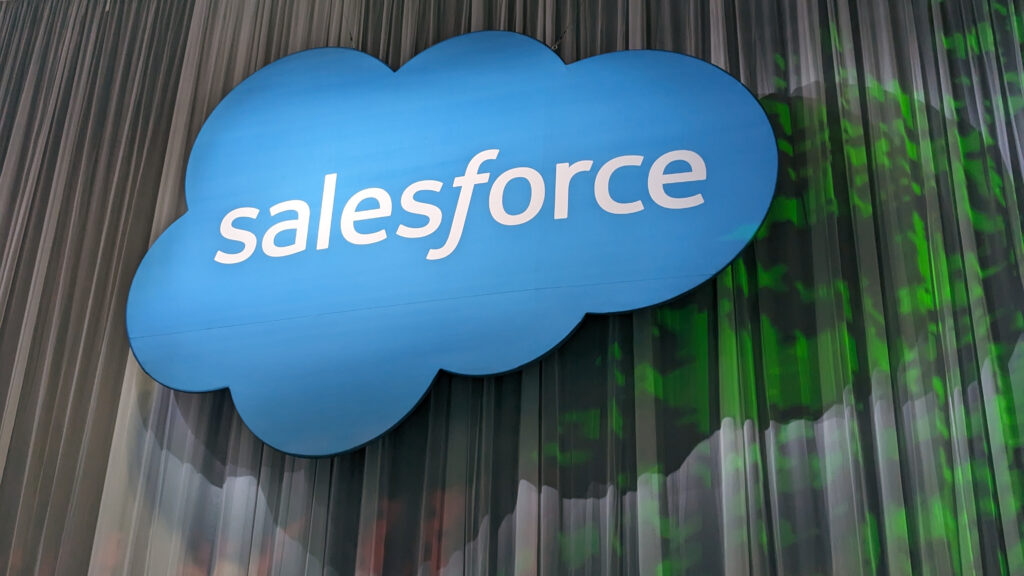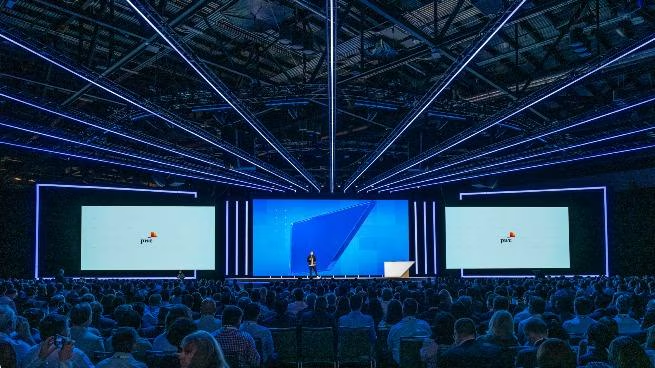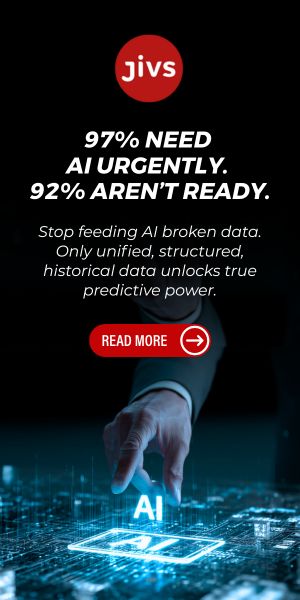Salesforce (NYSE: CRM) recently announced Agentforce 2.0: the newest version of Agentforce, the first digital labor platform for enterprises — an AI system for augmenting teams with trusted, autonomous AI agents in the flow of work. This release introduces a new library of pre-built skills and workflow integrations for rapid customization, the ability to deploy Agentforce in Slack, and advancements in agentic reasoning and retrieval augmented generation (RAG). These advances will enable companies to scale their workforce with customized agents capable of handling complex, multi-step tasks with even more precision and accuracy.
Every team has more work to do than resources available, leading to poorer customer interactions and lengthy backlogs. Organizations are turning to AI to help but have a low tolerance for inadequate solutions that provide generic responses. Existing solutions such as copilots struggle to provide accurate, trusted responses to complex requests — such as personalized guidance on a job application — and cannot take action on their own — like nurturing a lead with product recommendations. Salesforce is positioning Agentforce 2.0 as a new type of platform designed to supply digital labor in the form of autonomous AI agents that can reason over data and tap into workflows to take action on behalf of overwhelmed teams.
“Agentforce 2.0 takes our revolutionary Salesforce digital labor platform to another level, with new reasoning, integration and customization features that supercharge autonomous agents with unprecedented levels of intelligence, precision and accuracy. The demand for Agentforce has been amazing — no other company comes close to offering this complete AI solution for enterprises. We’re seamlessly bringing together AI, data, apps, and automation with humans to reshape how work gets done,” said Marc Benioff, Chair and CEO, Salesforce.
Time and integration challenges make it difficult to build customized agents for individual business teams or departments. Agentforce 2.0 eliminates these barriers with a new library of pre-built agent skills — tasks Agentforce can perform — spanning CRM, Slack, Tableau, and partner-developed skills on the AppExchange. This latest release empowers customers to extend Agentforce to any system or workflow using MuleSoft. It also features an enhanced Agent Builder capable of interpreting natural language instructions, such as ‘Onboard New Product Managers,’ to auto-generate new agents. These agents seamlessly combine pre-made skills with custom logic built in Salesforce, offering flexibility and speed.
- New CRM Skills for Agent-First Customer Experiences: New skills for sales teams such as Sales Development and Sales Coaching enable the creation of autonomous AI agents that can nurture leads based on your rules of engagement, as well as agents that can join your prospecting calls and provide instant feedback on interactions with customers, helping reps do their best work at massive scale. Additional skills include Marketing Campaign and Commerce Merchant skills, scheduling skills for service engagements, and new skills for field service workers.
- Take Action Across Any App or Workflow with MuleSoft: MuleSoft now enables Agentforce to get work done across your business. With MuleSoft for Flow, it’s easier than ever to create low-code workflows that span any system, with pre-built connectors for building multi-system workflows fast. As teams look to turn their APIs into Agentforce actions, the new MuleSoft API Catalog enables builders and Salesforce Admins to view, discover, and manage APIs across Salesforce, MuleSoft, Heroku, and any external services from one central location for rapid reuse. And the new MuleSoft Topic Center expands on this by enabling teams to infuse Agentforce metadata into every API they build, ensuring that any point of connectivity can be automatically turned into an Agentforce skill or action, making every API “agent-first” by default.
- Tableau Skills for Analytics and Insights: New Tableau Topics and Actions deliver data visualizations and predictions for deeper understanding of agent responses and accurate, business context-rich answers using Tableau Semantics. This unlocks new conversational analytics use cases, further lowering the barrier to data access for everyone.
- Slack Skills for Engaging in Channels and Conversations: With Slack Actions now available in Agent Builder, a team can enhance Agentforce with, for example, the ability to send a DM to provide a summary of what’s happening with a project, or update a Slack Canvas when a customer asks for changes to an ongoing project. As organizations look to unlock value from AI agents, they need solutions that are embedded where their employees already are. Agentforce 2.0 is deployable in Slack, bringing customizable digital labor into the messages (DMs) and channels where work happens. Agentforce 2.0 enables teams to easily bring Agentforce into any Slack conversation. Slack users can start a conversation directly from the Agentforce Hub, or @ mention Agentforce agents through DMs or in channels, tapping into their digital labor force directly in the flow of work. And Agent Builder now features pre-built Slack Actions such as “Create Canvas” or “Message Channel” that enable teams to rapidly enhance existing agents or create new ones that can effortlessly engage with your teams in Slack. Slack contains a wealth of domain knowledge across DMs, channels, and Canvases that reflect the unique nature of a business. With Slack Enterprise Search, Agentforce can draw from conversational data — enhancing the relevancy of responses and actions by drawing from public and permissioned information in Slack.
- Partner Skills Through the AppExchange: Agentforce is backed by the first-ever enterprise ecosystem of agent skills — enabling customers to extend their Agentforce with custom Topics and Actions ranging from new agent types such as the AI Employee Service Agent with Workday, to new, partner-built actions from Asymbl, Docusign, and Neuron 7.
- Agentforce Now Recommends Skills for the Work You Need Done: Create new agents in seconds using natural language descriptions. Agent Builder now uses Agentforce to compose new agents for the work you need done by auto-generating relevant topics and instructions while pulling from the library of skills and actions already available to you, ensuring teams can go live with new digital labor fast.
“At the Adecco Group, we are committed to creating meaningful connections between candidates and opportunities. By centralizing data across over 40 systems with Salesforce’s Data Cloud and leveraging Agentforce, we’re transforming the candidate experience. Agentforce will help prequalify candidates, enhance CVs, and ensure faster job placements. Agentforce agents also operate 24/7, freeing recruiters to focus on meaningful connections while delivering speed and personalization at scale,” said Greg Shewmaker, Senior Vice President of Global Operations and AI, The Adecco Group.
“At Accenture, we embrace emerging technologies first so we can help our clients go fast. Our sales team within Accenture’s Salesforce Business Group and Accenture Song are starting to use Agentforce to automate contact and close plan creation, surface insights through enterprise search, and keep teams aligned with dynamic updates. It’s helping to increase time-to-effectiveness, accelerate decision-making, and is allowing them to focus on delivering innovative solutions for their clients,” said Stephanie Sadowski, Salesforce Business Group lead at Accenture.
The Atlas Reasoning Engine is the brain behind Agentforce, enabling it to retrieve relevant data, then reason and act. With Agentforce 2.0, Salesforce is introducing enhanced reasoning and retrieval to handle deeply nuanced questions, powered by new capabilities in Data Cloud that fuel Agentforce with greater context — complementing structured and unstructured data with business-specific metadata for greater accuracy across the most complex, multi-faceted requests.
Agentforce’s Atlas Reasoning Engine can now handle a wider variety of interactions, including those with multiple layers that require deeper thought. For example, a question that is straightforward, such as “what is the status of my portfolio?” will employ basic reasoning for rapid responses. A deeper question, such as “What would be the right investment vehicle for my child’s college fund based on my current income and risk preferences?” would use enhanced reasoning with advanced data retrievers — improving the answer by refining the query before pulling both relevant data and context-specific metadata in Data Cloud. The Atlas Reasoning Engine assesses its own response and loops through a variety of tools and sources in what’s known as an ‘agentic loop,’ enabling it to provide a trusted, well-researched response or action to nuanced and more complex requests, and do so without writing custom code.
RAG enables Agentforce to quickly find relevant information in unstructured content. To power enhanced reasoning in the Atlas Reasoning Engine, Data Cloud can now enrich RAG chunks — the snippets of retrieved data — with metadata from the Salesforce Platform. Enriching RAG indexes with metadata context adapts Agentforce 2.0 to the unique conventions of your business without additional work, improving accuracy and relevancy for even the most intricate requests, while increasing trust through inline citations that point to the exact sources Agentforce pulled from to answer a given question.
What this means for ERP insiders
Agentforce built to integrate with ERP systems. Agentforce seamlessly integrates with ERP systems through Salesforce’s Data Cloud, which unifies data from internal and external sources, including ERP and Supply Chain Management (SCM) systems. This integration is facilitated by tools like MuleSoft’s pre-built connectors for enterprise systems such as SAP, Oracle, and Microsoft Dynamics, enabling real-time data synchronization. As a result, AI agents have access to up-to-date information on inventory levels, order statuses, and financial data, supporting automated workflows and reducing manual data entry. By analyzing ERP and SCM data, Agentforce provides predictive insights that aid in decision-making. In agriculture, for example, it can predict demand and optimize supply chain operations by analyzing data on crop yields, inventory levels, and external factors like weather patterns. Agentforce can handle increased workloads without the need for additional staff. In logistics, for example, AI agents can manage higher order volumes during peak seasons by processing large amounts of shipment and delivery data, maintaining service levels without overburdening the workforce.
Co-pilots may end up being a stepping stone. The outlook for AI agents in the ERP space is transformative, with their role evolving from task-specific automation to becoming central drivers of enterprise operations. As AI agents grow more sophisticated, they will integrate predictive analytics, generative AI, and real-time decision-making into ERP systems, automating complex workflows and enabling businesses to scale efficiently. AI copilots, currently a bridge between human operators and systems, will gradually evolve into autonomous agents capable of self-learning and end-to-end process execution. This transition may eventually reduce the need for copilots as their capabilities are subsumed by fully autonomous ERP systems. These self-adapting agents will not only provide insights but also execute strategies, responding dynamically to market conditions and internal demands, paving the way for hyperautomation and decentralized, self-regulating ERP ecosystems. Autonomous ERP systems will emerge as a natural progression of advancements in AI, machine learning, and automation technologies, combined with the increasing integration of IoT, blockchain, and edge computing. Over the next 3–5 years, ERP platforms will evolve from rule-based automation to self-learning systems capable of real-time decision-making, leveraging predictive and prescriptive analytics. By 2030, widespread adoption of AI agents and hyperautomation frameworks will enable ERPs to become fully autonomous, managing end-to-end workflows with minimal human intervention. These systems will proactively adjust to dynamic business conditions, optimize resource allocation, and drive continuous improvement, ultimately transforming ERPs into intelligent, self-regulating ecosystems that underpin agile, data-driven enterprises.
ERP leaders have agentic AI in their sights. ERP providers are increasingly integrating agentic AI into their platforms, leveraging both organic development and strategic partnerships to deliver smarter, more autonomous solutions for businesses. Industry leaders like SAP, Oracle, and Microsoft are embedding AI-powered capabilities into their ERP systems, enabling real-time decision-making, predictive analytics, and process automation. These innovations are often enhanced through partnerships with AI specialists like OpenAI, UiPath, Salesforce and AWS, which provide advanced tools such as generative AI, conversational assistants, and robotic process automation (RPA). Smaller providers like Infor and Acumatica focus on niche applications, while companies like Workday target specific functions like finance and HR. Together, these efforts are transforming ERP systems into intelligent, adaptive ecosystems that help organizations optimize operations, enhance customer experiences, and achieve scalability with minimal human intervention.





